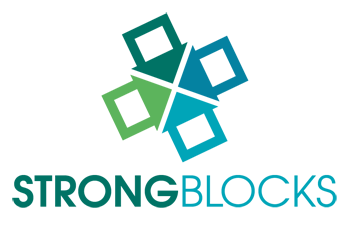Do you have an old eviction haunting you, and you can't seem to find a decent home to live in? The tenant-landlord relationship is an important one, one where both sides of the relationship need to feel comfortable that the relationship won't be violated or taken advantage of.
When you apply for a new house or apartment to rent, the landlord will typically look into past court records. In the State of Wisconsin, this information is public and accessible to anyone on the Wisconsin Court Systems website. If a landlord or property manager sees past eviction judgments on your record, they may see you as a risk and assume you do not have "paying your living expenses" as a top priority; Some Landlords will use this in their decision to not rent to you even when the eviction was old. Here are some tips to consider to clear up your past so you can move forward...
Each landlord will have a different tolerance to the eviction issue, varying between strict and lenient. Some may not allow any tenants with known evictions on their records ever. However, you may find that some (Strong Blocks included) will allow you to rent from them once you have satisfied or paid off your older eviction judgments in full and haven't had any new filings within the last 3 years.
If you'd like to do learn how to pay off unsatisfied judgments, keep reading...
How to pay off past eviction judgments IN Milwaukee:
1. Check your name on "CCAP"
When you apply for a new house or apartment to rent, the landlord will typically look into past court records, which are accessible to anyone who checks (it's public), on the Wisconsin Court Systems website. You need to know what they are seeing! Check yourself on Wisconsin's Circuit Court Access Portal (CCAP). Print all the reports that have a "Class Code Description" of Small Claims, Eviction. These are the cases that start with the year of the case and then the letters "SC". You can typically get most of the information you'll need if the case is a valid case or it's not actually you from the description. Some don't have a birthdate, but you may have a common name. Be prepared to gather proof of your residency during the time of these eviction filings so you can include this in future rental applications knowing they might see this and think it's you.
2. Pay the judgment balance in full or settle the eviction judgment for less than the amount owed
Once you know how much you owe and what eviction judgments you need to pay, you'll need to pay each off in full or save up your money to be able to make an offer to settle the old eviction judgment(s). To do this, first, you'll need to find the old landlord. This can be easy if it's a big company, but hard if it's an individual or a company that is now doing business under a new name. You'll need to look closely at the judgment information from Step 1 above to see who exactly is saying you owe them, find their phone number or office address. Sometimes you can use Google search online using the name of the company or property manager or person who filed against you, but sometimes it's much more difficult to find the person to pay if you don't have your old landlord's phone number. One trick it to find the Attorney listed under the "Plaintiff" who represented your old landlord and try to find them and call them to see if they will help you "settle the judgment for less than the amount owed" or to "get the judgment amount paid in full".
Settling an old eviction judgment for less than the stated balance is the harder route to take versus just paying in full, but it can be done using the same steps. Once you find the landlord and get a verbal agreement on the amount owed to satisfy the judgment, make a money order for the exact amount made payable to the landlord and agree to meet to exchange your money order for a "signed and notarized Satisfaction of Judgment" that references the exact information from your judgment case: Creditor = Landlord/Plaintiff, Debtor = You/Defendant, Date filed, Amount of Payment, and Case Number. Remember you are looking to get the old Landlord to check the "Fully Satisfied" box so the amount you agree to must get the landlord to check this box. You do not want a "partially satisfied" lien. You can find the form (GF-129) the landlord needs to get signed and notarized here. It is critical that the landlord signs this and gets it notarized in exchange for your money so if they don't have a notary present, ask to meet at a bank to get it done at the same time. You don't want to pay the landlord without getting this satisfaction form.
If you decide on another way to settle the old debt for less than what is owed remember 2 key points from above:
- USE A MONEY ORDER: NEVER provide electronic access to your bank account to anyone
- GET FORM GF-129 SIGNED AND NOTARIZED: Always get your settlement/payment agreement in WRITING at the same time you are making the payment
Make a copy of the satisfaction form (GF-129) and keep your money order receipt in a safe place. You'll need the original GF-129 form for Step 3.
3. Visit the courthouse with a $5 Money Order and your signed and notarized GF-129 Form and landlord's money order receipt
You will need to pay an extra satisfaction fee (currently $5) to file your satisfaction and get the eviction judgment to show up as paid on your name so you'll need to have a way to pay this as well. Get a $5 money order, your original GF-129 form signed and notarized, and your money order receipt showing you paid the landlord and go to the Milwaukee County Courthouse during their office hours,
MILWAUKEE COUNTY CLERK OF CIRCUIT COURTS
901 N. 9th Street, Room 104
Milwaukee, Wisconsin 53233
(414) 278-4190
Their current Customer Service Hours are 12-2 p.m. Monday - Friday
(Subject to Change so call to confirm hours)
The original notarized Satisfaction of Judgment can be submitted in person at the courthouse. If you are coming in person, first go down to the Record Center in Room 104 (Window 14) and obtain the file. Take the file over to the cashiers, also in Room 104, with your Satisfaction of Judgment and $5 money order.
More information on this process can be found on the Milwaukee County Courts website. You can also find some details here for the process they lay out on how this is all done.
4. Get a proof of payment receipt
Ask the court house employee to give you a receipt for your $5 payment and make sure it has your name and case number. This is important in case there are any errors to prove you made your payment and can prove the judgment should show up as a satisfied judgment in the future.5. Check to see if your payment has cleared
Wait a few days and go online to the Wisconsin Court Systems website again to see if your payment has been reflected. Keep checking every few days until it has cleared. If it doesn't clear, then go back to the court house and bring your receipt and copies of everything.
If you have been rejected for an apartment or home; reach back out to the landlord whom you were rejected by and see if they would be willing to reconsider your application now that your judgment is satisfied.
If you are from outside of Milwaukee County, you may have to take different actions and this method may not apply to you. But you should still consider visiting your local court house as your first step in settling unpaid eviction judgments; ask around until you find the right person who can explain your county's processes.
As a disclaimer, this is not legal advice. Please seek an attorney if you have any questions or complications. For legal questions or more details on any of this you should seek out an attorney. Another great resource in the Milwaukee area who can help and sometimes can even help you get these cases "sealed" so they don't show up on your name after they are resolved is Legal Aid Society of Milwaukee.
Looking to own a home, but can't quite qualify for a mortgage just yet? Rent to own may be your best option. Strong Blocks 21 month rent to own program helps families get into a home while they work towards getting approved for a mortgage. If you have unsettled or unpaid evictions in your past, your first step will be working to get these paid or settled before applying to the program. Check all of Strong Blocks qualification criteria before submitting your application.

Written by Tanika Allen, Friends of Housing
Tanika Allen is the Leasing Agent for Friends of Housing Corporation and has been an asset to the company since 2005. She has an Associate’s degree in business management, has completed several landlord/tenant trainings, and obtains a Real Estate Broker’s license for the state of Wisconsin. Her most enjoyable task and main focus is to help individuals and families lease into nice and affordable single family homes, duplexes, and apartments. Friends of Housing Corporation is a property management company that has been in operation since 1997 and manages over 2100 units in the greater Milwaukee area for market rate families, but mostly elderly and low income families.




